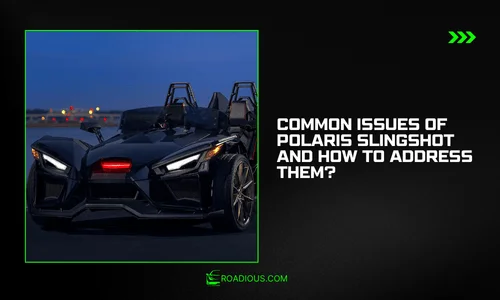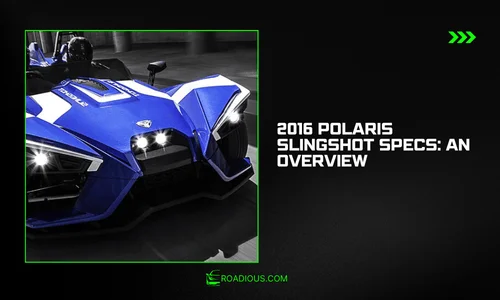The Polaris Slingshot promises adrenaline and open-air freedom, but it’s not without its flaws. I’ve worked with several owners over the years, and what’s clear is that most issues stem from skipped maintenance or overlooked details. From quirky electronics to wear-heavy transmission parts, recognizing trouble spots early can save you from expensive repairs. Let’s dig into the problems I’ve seen most often and what you can do to avoid them.

Most Common Polaris Slingshot Problems
Electrical System Issues
Dead batteries and glitchy electronics top the list of complaints. These often trace back to parasitic drains, especially after adding aftermarket lighting or sound systems. I always suggest checking accessory wiring and testing the battery regularly.
As electrical technician Marco Reeves puts it:
“Accessory installations without proper load management are the number one cause of repeat battery failure in custom vehicles.”
Engine Performance Problems
Overheating, rough idling, and unexpected stalls usually point to sensor issues or clogged fuel injectors. From what I’ve seen, sticking to scheduled oil changes and checking coolant levels can prevent 90% of these headaches. The Slingshot’s cooling system isn’t overly complex, but it can be unforgiving if ignored.
Transmission and Clutch Concerns
Slipping gears or tough shifts typically mean the clutch plates are worn or the transmission fluid is overdue. I’ve dealt with premature wear from owners skipping basic fluid checks. If you notice grinding or resistance, get it looked at before it spirals.
Design and Structural Challenges
Suspension and Ride Comfort
Stock suspension on the Slingshot is tuned for performance, not comfort. It’s firm, sometimes uncomfortably so on uneven roads. I recommend upgrading to adjustable coilovers if you want to strike a better balance between handling and ride quality.
Body and Exterior Durability
With lightweight materials comes faster wear. Sunlight, rain, and road grit take their toll. I’ve seen paint fade and trim warp from simple exposure. Regular waxing and UV protectants make a real difference. If you’re storing it outdoors, invest in a quality cover.
Safety-Related Problems
Brake System Issues
Squeaky brakes or spongy feel? You’re likely dealing with worn pads or uneven pressure. I always advise inspecting brake components every few months.
Motorsports safety expert Devon Clark warns:
“Neglecting your braking system is the fastest way to compromise your safety at high speeds.”
Stability and Traction Control Malfunctions
These electronic systems are crucial for a vehicle with this much torque and an open frame. Warning lights, lagging responses, or sensor errors are your signal to get it checked. Don’t dismiss them, especially if road conditions are unpredictable.
Maintenance Tips to Prevent Common Problems
Regular Maintenance Schedules
It’s basic but true: regular servicing keeps the Polaris Slingshot running right. Oil changes, brake checks, and fluid top-offs are essential. I tell owners to schedule reminders. Even tire pressure impacts handling more than most people realize.
Proper Storage and Handling
When winter hits, cold and moisture can wreck your wiring and trim. My advice is to fill the tank, disconnect the battery, and store it under a breathable, weatherproof cover. It’s a small effort that protects your investment.
Final Takeaways
The Polaris Slingshot offers an unforgettable ride, but owning one means staying proactive. Keep up with maintenance, inspect early signs of trouble, and protect it from the elements. With just a little attention, your 2016 Slingshot will stay reliable, safe, and thrilling for the long haul.





